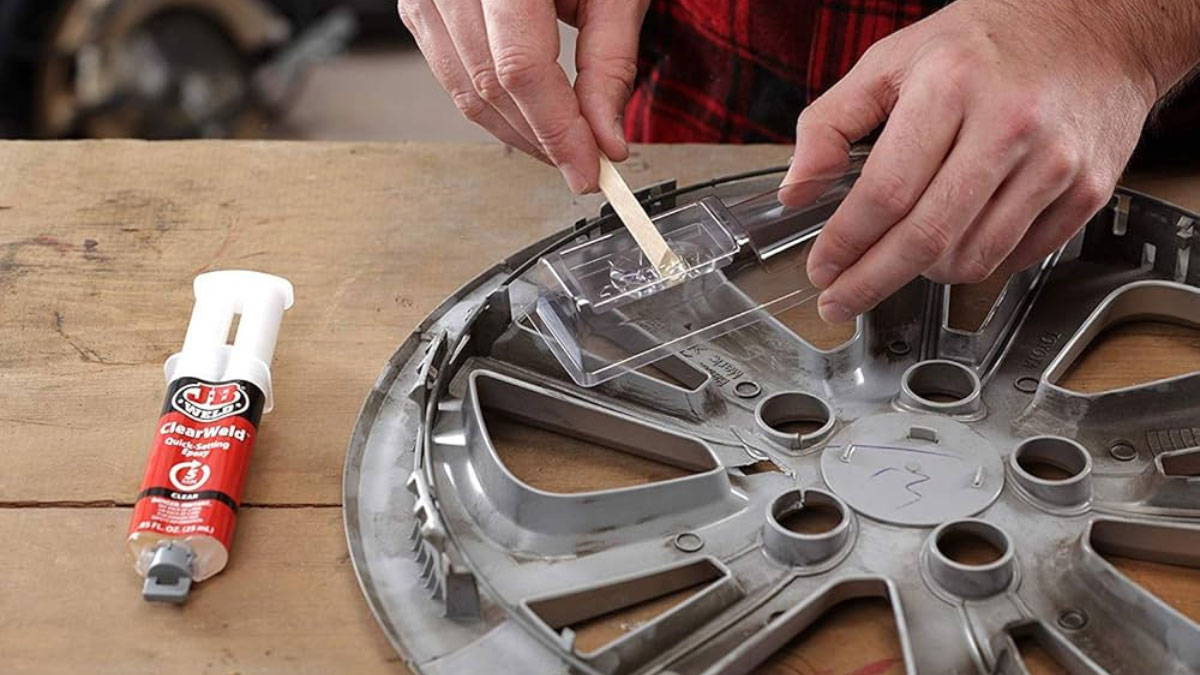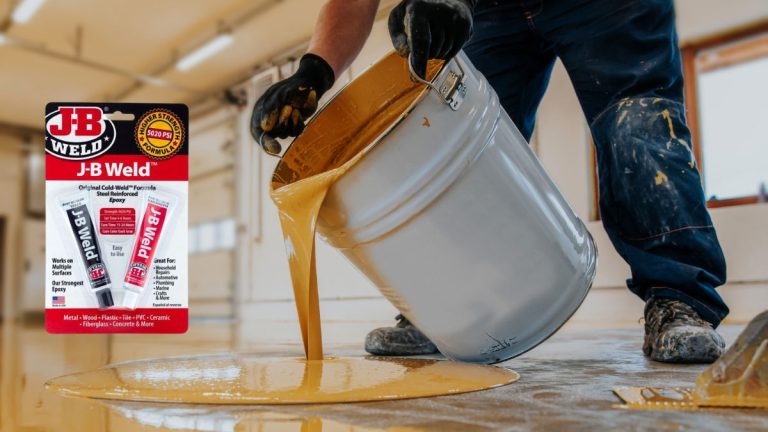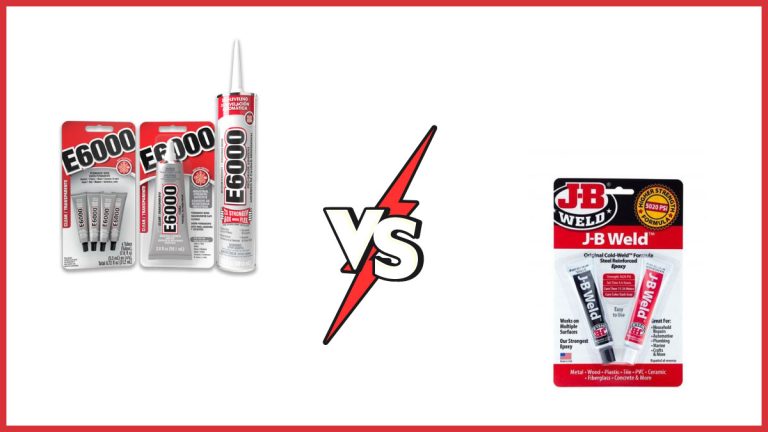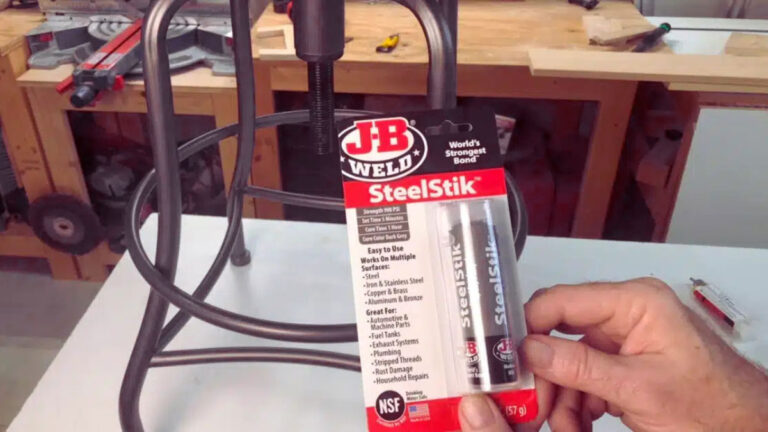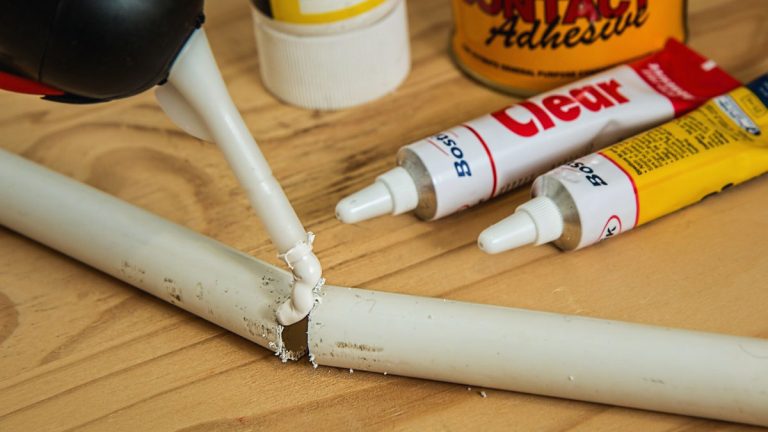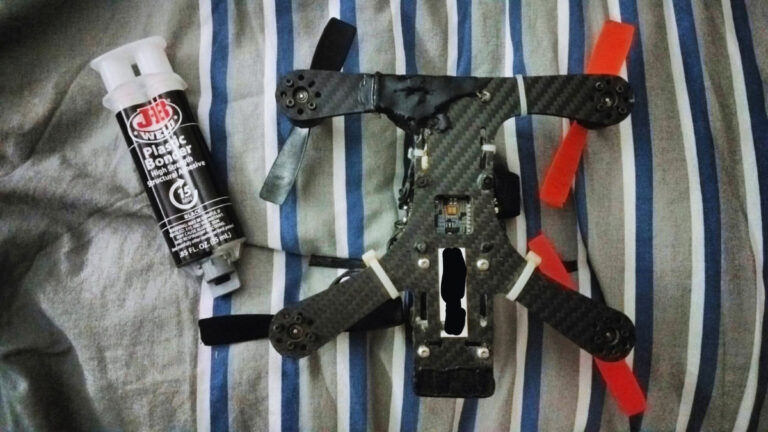Is JB Weld Sandable: Tips for a Smooth, Professional Finish
If you’ve ever tackled a DIY repair project, you’ve probably heard of JB Weld. It’s a go-to adhesive for bonding metal, wood, and other materials, known for its strength and durability. But when it comes to finishing your project, you might wonder, “Is JB Weld sandable?”
Understanding whether you can sand JB Weld is crucial for achieving a smooth, professional-looking finish. Whether you’re fixing a broken appliance or creating a custom piece, knowing how to work with JB Weld post-application can make all the difference. Let’s jump into what you need to know to get the best results.
Key Takeaways
- JB Weld is Sandable: JB Weld can be effectively sanded to achieve a smooth, professional finish.
- Preparation is Crucial: Ensure the JB Weld is fully cured before sanding and clean the area with a degreaser or rubbing alcohol to remove debris and contaminants.
- Choose the Right Grit: Start with coarse sandpaper (80-120 grit) for removing excess material, then switch to finer sandpaper (200-400 grit) to smooth and refine the surface.
- Proper Sanding Techniques: Use light pressure, work in small circular motions, and frequently check your progress to maintain the desired shape and contour.
- Safety First: Always wear safety gear such as gloves, a dust mask, and safety goggles to protect against harmful particles.
- Alternative Finishing Methods: Consider using rotary tools, files, or applying additional layers and painting for a perfectly smooth and professional-looking finish.
Can You Sand JB Weld?
Yes, you can sand JB Weld, but it requires careful consideration and proper technique due to its robust nature. Understanding the process of sanding JB Weld will ensure you achieve a smooth, professional finish.
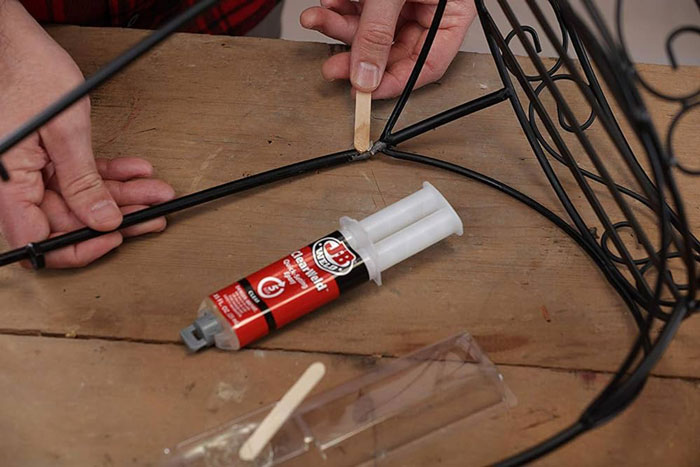
Preparation
Before you begin sanding, ensure the JB Weld is fully cured. Typically, JB Weld cures within 15-24 hours, but refer to the product instructions for precise curing time. Clean the area with a degreaser or rubbing alcohol to remove debris, grease, and contaminants. This step is crucial as it prevents any impurities from affecting the sanding process.
Grit Selection
Choosing the right grit sandpaper is essential to effectively sand JB Weld. Here’s a quick guide:
- Coarse Sandpaper (80-120 grit): Use this to remove excess JB Weld. Starting with a lower grit helps in shaping the cured epoxy quickly.
- Medium to Fine Sandpaper (200-400 grit): Switch to these grits for smoothing the surface and refining the shape. Finer grits will help in achieving a smoother finish.
Sanding Techniques
Follow these techniques for effective sanding:
- Use light pressure to avoid damaging the underlying material.
- Work in small, circular motions to evenly sand the JB Weld.
- Periodically check your progress to maintain the desired shape and contour.
- Wipe away dust frequently to see the surface clearly.
Safety
While sanding JB Weld, always wear safety gear to protect yourself:
- Gloves: Protect your hands from abrasive materials and potential allergens.
- Dust Mask: Prevent inhalation of harmful particles released during sanding.
- Safety Goggles: Shield your eyes from flying debris.
Alternative Methods
Besides sandpaper, various tools can be used to sand JB Weld:
- Rotary Tools: Ideal for precise shaping and detailing but exercise caution to avoid over-sanding.
- Files: Great for smaller areas and detailed work.
- Abrasives: Useful for finishing touches and smoothing surfaces.
Each alternative has its own pros and cons, and the choice depends on the specific needs of your project.
| Task | Tools | Grit/Feature | Description |
|---|---|---|---|
| Initial Shaping | Coarse Sandpaper | 80-120 grit | Removes excess JB Weld quickly |
| Surface Smoothing | Fine Sandpaper | 200-400 grit | Achieves a smooth, refined finish |
| Detail Shaping | Rotary Tools | Various bits | Offers precision but requires careful handling |
| Small Area Work | Files | Fine/Coarse | Helps in detailing small areas |
| Safety Equipment | Gloves, Mask, Goggles | Personal Protection | Protects against dust and debris |
Sanding JB Weld is not only possible but also effective when approached correctly. Proper preparation, grit selection, sanding techniques, and the use of alternative methods and safety equipment ensure optimal results.
Preparation Before Sanding
Preparation is key for sanding JB Weld properly. Follow these necessary steps to ensure a smooth process.
Step-by-Step Process:
- Cleaning the Surface:
Thoroughly clean the area where JB Weld has been applied. Use a degreaser or rubbing alcohol to eliminate any debris, grease, or contaminants. Ensuring a clean surface is crucial for effective sanding. - Safety Gear:
Wear appropriate safety gear to protect yourself from harmful particles. This includes gloves to protect your hands and a dust mask to avoid inhaling dust. Safety goggles can also be beneficial to shield your eyes.
Key Terms:
- Degreaser: A cleaning agent that removes grease from surfaces.
- Rubbing Alcohol: Isopropyl alcohol used for cleaning and disinfecting.
- Safety Gear: Equipment designed to protect individuals from harm.
- Clean the Surface:
- Remove debris
- Use degreaser or rubbing alcohol
- Ensure the surface is dry
- Gather Safety Gear:
- Gloves
- Dust mask
- Safety goggles
By following these preparation steps, you’ll create an optimal environment for sanding JB Weld and achieve the desired finish. Taking the time to prepare adequately ensures better results and makes the sanding process smoother and more efficient.
Sanding Techniques
Sanding JB Weld requires specific techniques to ensure a smooth, professional finish. You’ll need the right tools and a step-by-step process to achieve optimal results.
Choosing the Right Tools
Grit Sandpaper:
- Coarse Grit (80-120): Ideal for removing excess material.
- Fine Grit (200-400): Suitable for smoothing the surface.
Safety Gear:
- Gloves: Protect your hands from debris.
- Dust Mask: Prevent inhalation of harmful particles.
- Safety Goggles: Shield your eyes from dust.
- Preparation:
- Clean the Area: Remove debris, grease, or contaminants using a degreaser or rubbing alcohol.
- Wear Safety Gear: Ensure you have gloves, a dust mask, and safety goggles.
- Initial Sanding:
- Start with Coarse Grit (80-120): Begin with coarse sandpaper to remove excess JB Weld. Use light pressure and small circular motions for uniformity.
- Refining the Surface:
- Switch to Fine Grit (200-400): Once the major imperfections are smoothed out, use finer sandpaper to refine the surface.
- Final Touches:
- Ensure the surface is smooth and consistent, checking frequently to assess progress.
| Tool Needed | Function |
|---|---|
| Coarse Sandpaper | Removing excess material |
| Fine Sandpaper | Smoothing the surface |
| Degreaser/Rubbing Alcohol | Cleaning the area |
| Gloves | Protecting hands |
| Dust Mask | Preventing inhalation of harmful particles |
| Safety Goggles | Shielding eyes from dust |
By following these steps, you ensure a smooth finish when sanding JB Weld. Remember to always wear safety gear and choose the correct grit sandpaper.
Tips for Effective Sanding
Applying JB Weld provides a strong bond for various materials, but achieving a smooth finish post-application necessitates effective sanding techniques. Use the following tips to ensure optimal results when sanding JB Weld.
Ensuring a Smooth Finish
Preparation, the right sandpaper, and proper techniques are critical for a smooth finish.
- Preparation:
- Clean the area thoroughly to remove debris, grease, and contaminants with a degreaser or rubbing alcohol.
- Wear appropriate safety gear, including gloves and a dust mask, to protect against harmful particles.
- Choosing the Right Sandpaper:
- Start with coarse sandpaper (80-120 grit) to remove excess material. For example, use 80 grit for heavy removal and 120 grit for moderate.
- Switch to finer sandpaper (200-400 grit) for smoothing the surface. For instance, employ 200 grit for an even finish and 400 grit for final smoothing.
- Sanding Techniques:
- Apply light pressure initially, increasing it as needed to avoid damaging the surface.
- Use small, circular motions to ensure uniformity and prevent gouging or scratching. Periodically check your progress to maintain the desired shape and contour.
- Tools and Methods:
- Use sanding blocks or sanding discs for precision and control. Sanding blocks ensure even pressure distribution, while sanding discs are suitable for larger areas.
- Consider rotary tools for intricate details and files for more precise edges.
Common Mistakes to Avoid
Avoid these common pitfalls to ensure your JB Weld project achieves professional results.
- Skipping Surface Cleaning: Always clean the surface before sanding to prevent debris from causing imperfections.
- Incorrect Grit Selection: Using too coarse or too fine sandpaper can result in poor surface quality. Start with coarse (80-120 grit) and finish with finer (200-400 grit) sandpaper.
- Over-Sanding: Applying excessive pressure or sanding too much can damage the underlying material. Check your progress regularly and use gentle, consistent pressure.
- Neglecting Safety Gear: Forgetting to wear gloves and a dust mask can expose you to harmful particles. Always prioritize safety by wearing appropriate protective equipment.
Effectively sanding JB Weld involves proper preparation, choosing the right tools, and avoiding common mistakes to ensure a smooth, professional finish.
Alternative Methods for Finishing JB Weld
After sanding JB Weld, you may want additional finishing methods to achieve a professional look. Here are some alternatives:
- Layering and Painting:
- After you’ve sanded the JB Weld, apply additional layers if necessary for a uniform surface.
- Once fully cured, paint over the area. This provides a consistent color and smooth finish.
- Ensure the paint is compatible with epoxy surfaces.
- Applying Urushi and Mica:
- Urushi: A natural lacquer that can be applied over the sanded JB Weld. This gives the surface a glossy, durable finish.
- Mica Powder: Add mica powder for a metallic finish, such as gold or silver. Seal with a protective layer like mod podge for durability.
Table: Alternative Methods and Their Benefits
| Method | Description | Benefits |
|---|---|---|
| Layering and Painting | Adding additional layers of JB Weld and then painting over the surface | Achieves a uniform color and smooth finish |
| Applying Urushi and Mica | Using natural lacquer and mica powder for a decorative finish | Provides a metallic finish with durability |
Key Terms
- Urushi: A type of natural lacquer used for coating.
- Mica Powder: Fine powder offering metallic sheen.
Steps for Each Method
Layering and Painting:
- Sand the JB Weld surface until smooth.
- Apply additional layers of JB Weld if needed, allowing each to cure.
- Paint the surface with epoxy-compatible paint.
- Sand the JB Weld surface to achieve smoothness.
- Apply urushi lacquer, ensuring even coverage.
- Sprinkle mica powder for the desired effect.
- Seal the finish with a protective layer like mod podge.
Use these methods to enhance the appearance and durability of your JB Weld repairs.
Conclusion
JB Weld’s sandability opens up numerous possibilities for achieving a smooth, professional finish on your repair projects. By following the right steps and using proper techniques, you can sand JB Weld effectively. Remember to ensure the adhesive is fully cured, choose the correct grit sandpaper, and wear appropriate safety gear.
Whether you’re aiming for a basic smooth finish or a decorative touch, the right approach can make all the difference. Employing layering and painting techniques or using Urushi lacquer and mica powder can further enhance the look and durability of your repairs. With the right tools and methods, your JB Weld projects will not only be strong but also visually appealing.
Frequently Asked Questions
Is JB Weld sandable?
Yes, JB Weld can be sanded after it has fully cured, allowing for a smooth, professional finish.
How long should JB Weld cure before sanding?
JB Weld should cure for at least 8 hours before sanding for optimal durability and results.
What grit sandpaper should I use for sanding JB Weld?
Start with coarse sandpaper (80-120 grit) for initial shaping and then switch to finer sandpaper (200-400 grit) for smoothing.
Are there any safety precautions for sanding JB Weld?
Yes, wear gloves, a dust mask, and safety goggles to protect against harmful particles during sanding.
How do I prepare JB Weld for sanding?
Clean the surface with a degreaser or rubbing alcohol to remove debris and contaminants before sanding.
What are some common mistakes to avoid while sanding JB Weld?
Avoid skipping surface cleaning, using incorrect grit sandpaper, over-sanding, and neglecting safety gear.
Can I paint over sanded JB Weld?
Yes, you can apply additional layers of JB Weld and then paint over the surface for a uniform and professional finish.
What alternative finishing methods can be used after sanding JB Weld?
Alternative methods include applying Urushi lacquer and mica powder for a decorative, glossy, and metallic finish.

